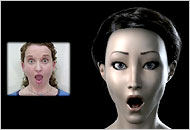
I met Chuck Jones at a party and asked him if this story was true. He hadn't heard of it but said it was quite possible, and related a similar case.
I mention this because over the years I have been sent a number of ideas for Animated TV series by students and animators who feel that TV Studios are on the lookout for new material; they rarely are. There is a feeling that once you have a character as a design, it has a life of its own, and the scriptwriter simply has to record it!!!
My advice to those attempting to do ideas for animated TV series is to look at how many of the past series started as this will show how the characters and storyline have been developed.
The Pink Panther started as a film title, and The Care Bears started as toys. Thomas the Tank engine was born as a book character, and Popeye as a comic. The Muppet Cartoon started as live-action puppets, while the Super Mario Brothers came into being as a computer game. Some familiarity with all of these markets is necessary if you want to write for animation.
There are several others sources for animated series but the common element in the above examples is that these characters were established before being made into a series. It is not hard to pitch an idea when you start from this basis.
Another advantage is to have your own studio and be able to use spare time to produce a pilot for an idea. If the pilot is accepted then it is usually not too difficult to get production money.
A third situation is to be the producer of someone elses series, and come up with your own idea which can be based on your knowledge of the market, as well as having the facilities to test out your idea. Needless to say, few people are in such favourable positions of being able to set up a series.
But there are a couple of ways that offer hope; the first is to become a contributor to someone elses series; and secondly to get your work published in some other medium such as a book/comic etc. It is not enough to understand about animation, you also need to understand 'Markets' because that is what pitching is about. Unfortunately this is a subject rarely included in Animation Courses.






